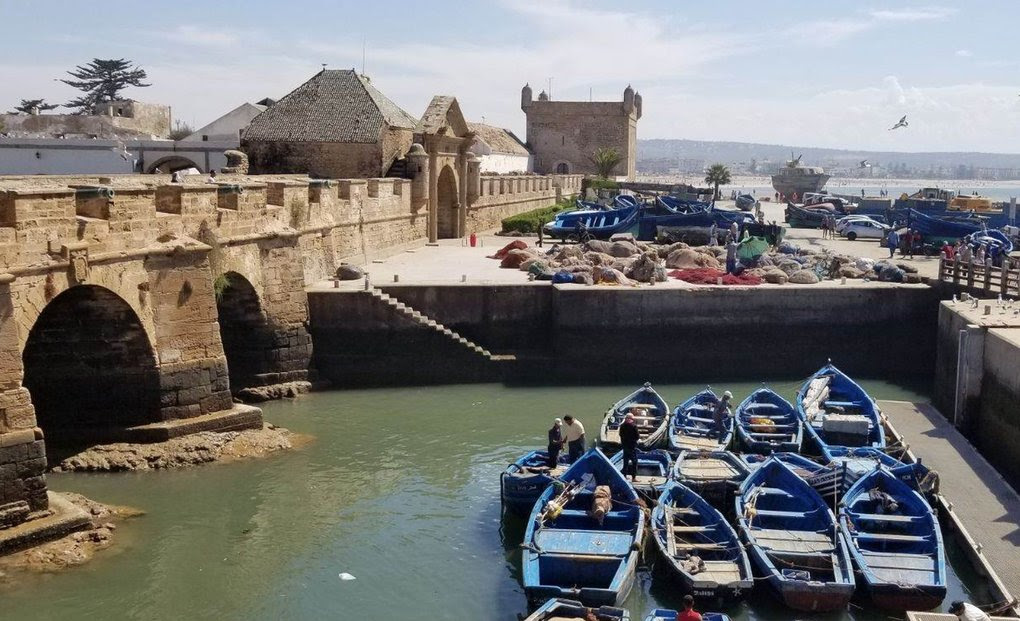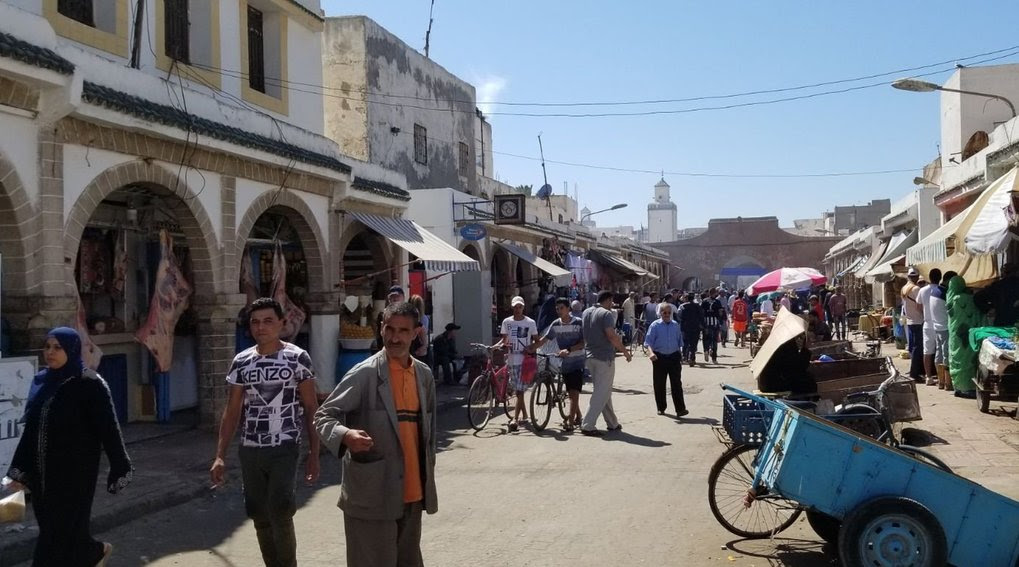Seattle Times
Tyrone Beason / Columnist
Everywhere you go in this gusty, whitewashed beach town on Morocco’s Atlantic Coast, somebody has a fact-free story about that time Jimi Hendrix briefly visited in the summer of 1969.
Many locals insist, falsely, that he vacationed here in 1968. Some will tell you, again falsely, that he wanted or even tried to buy the nearby village of Diabat, which is home to the present-day “Cafe Hendrix.” They will say he was inspired to write “Castles Made of Sand” after seeing a ruined fortress on a local beach; never mind that he released the song two years before coming here.
Essaouira fell in love with Seattle’s most famous native son and even more in love with the tall tales surrounding his short stay.
“I saw him,” Moulay Ahmed tells me when I stop to snap a picture of his orange-juice cart a couple of blocks in from the beach. The cart has a likeness of Hendrix on the front of it, right alongside pictures of French singer Edith Piaf and a young Cat Stevens, both of whom had their own links to Essaouira.
Wearing oversize shades and a sailor’s cap tilted just so, faded jeans and a gray mustache, he looks very much like the grizzled skipper that he is, albeit with the sort of savoir faire that reminds me that Morocco was a former French colony.
Moulay Ahmed, a skipper who also runs a juice cart in the coastal city of Essaouira, recalls seeing Jimi Hendrix around town when the Seattle rock legend visited in 1969. (Tyrone Beason / The Seattle Times)
“I was 15,” Ahmed says dreamily, his mind drifting back to that magical summer when one of the world’s greatest electric guitarists graced this sleepy retreat a couple of hours from hectic Marrakech.
Ahmed says he spotted Hendrix hanging out by the beach, which sounds pretty credible. The rocker is known to have spent part of his time at a beachside hotel next to Essaouira’s old medina.
Hendrix, who died in 1970, never returned to Essaouira, but Essaouira never let go of the legend — or the legends — they spun about him.
As fascinating as Hendrix’s odd pull on Essaouira may be, I walk around the town’s oceanfront fortress and wind through narrow lanes full of carpet sellers, produce and spice vendors, grilled-fish stands and tea cafes, thinking about the remarkable turn of historical events that led to Hendrix’s visit — and my own.
The Jimi Hendrix “experience” was inseparable from the African-American experience that inspired his sound. He hollered like workers in the cotton fields and bluesmen in juke joints. He played with the daring virtuosity that comes so naturally to a people for whom cultural showmanship was an antidote to political invisibility. He set hundreds of years of pain and oppression on fire and built a transcendent career with the ashes, becoming an icon even in the world’s far reaches.
Fishing boats cluster in the port of Essauoira on Morocco’s Atlantic coast. The town fell in love with Jimi Hendrix when he vacationed there in 1969. His brief visit spawned countless local tales, mostly false, about his time there. (Tyrone Beason / The Seattle Times)
But like so many black writers, artists and musicians of the time, Hendrix traveled to other countries in order to fully realize himself. America didn’t make much room for free black expression, and most black folks either didn’t get Hendrix or wrote him off as a sellout who catered to all-white audiences.
A true free spirit from a country that kept blacks in their place, Hendrix was a supporter but not a particularly vocal crusader for civil rights. He didn’t believe in white rock or black rock. Music was universal to him.
But oppression is particular. He learned that in Seattle, when getting hassled by police as a teen and later as a guitarist for big-name black entertainers while touring the ‘Chitlin’ Circuit’ of segregated entertainment halls.
He was wealthy enough to travel the globe but he never enjoyed the luxury of disregarding where he, and his musical impulses, came from. That’s a good thing.
In Morocco, Hendrix would’ve heard echoes of the Delta blues, old-time gospel and Southern field chants in the hypnotic songs of local Gnaoua musicians who jammed on the three-stringed, camel-skin-covered gimbri. He would’ve seen, as I did, an uncanny resemblance in the faces and fancy footwork of the Moroccan descendants of Sub-Saharan African slaves who traditionally performed that music.
Filled with craft and spice merchants and buzzing with streetlife, Essaouira’s medina seems unchanged by time. (Tyron Beason / The Seattle Times)
Hendrix conjured phenomenal moments from the African diaspora in his own right. While Dr. King took us to the mountaintop with his speeches, Hendrix jetted us to new dimensions with his riffs and distortions.
Through sheer talent, drive and a wanderlust for new creative horizons, he’d become the highest-paid rock star on the planet by 1969. He was a black man with the means to go out and see the world, not just be undermined by its machinations.
Just weeks after visiting Essaouira, Hendrix helped close Woodstock by smashing “The Star-Spangled Banner” with his guitar and reassembling the anthem in his own image of America at that turbulent time.
Nearly 50 years later, looking back on America from the edge of Africa, I hear that revolutionary performance — and feel his spirit wherever I turn.










